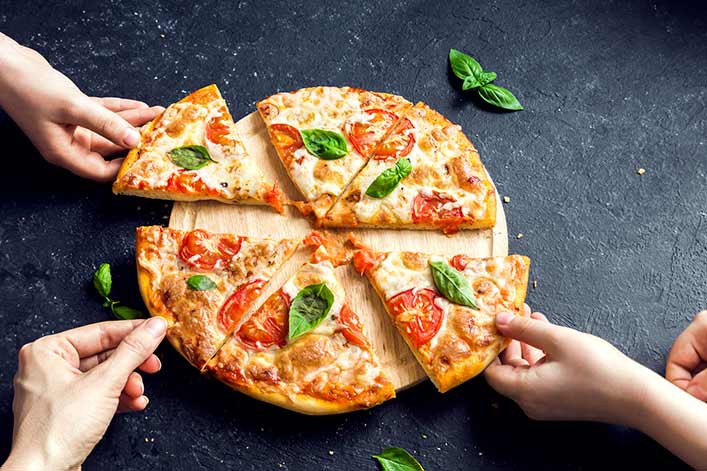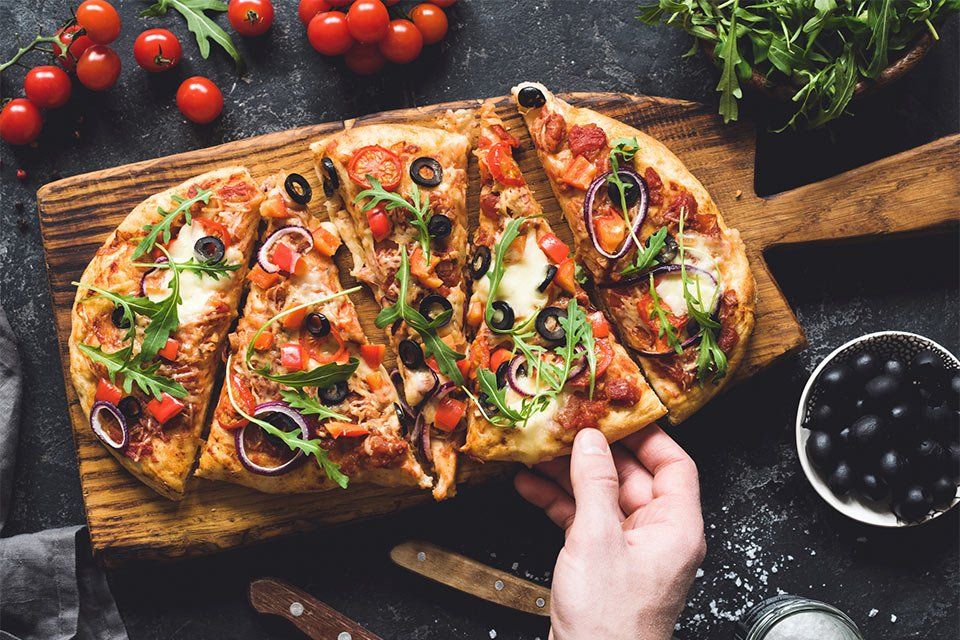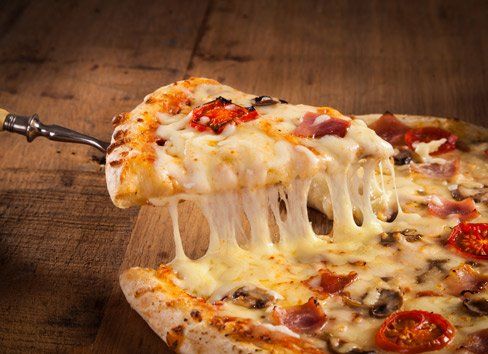5 Lessons At-Home Pizza Makers Can Learn From the Pros
- By Admin
- •
- 08 Jan, 2018
- •

Have you attempted to make pizza at home with less-than-satisfying results? Preparing a restaurant-quality pizza is not easy in a home kitchen, but it's not impossible, either. For better results on pizza night, read on to learn a few lessons from professional pizza makers.
Lesson #1: Let Your Dough Rise Overnight
Start off by finding a pizza place that makes pies you really like.
Many pizza recipes for home cooks instruct you to mix the dough ingredients, knead your dough, let it rise for an hour or two, and then shape it into a ball before a second rise. Assuming you use good-quality flour and knead generously, this results in a decent pizza dough - but one that lacks the complexity you find in a good restaurant-quality pizza.
Look instead for a dough recipe that instructs you to let the dough rise overnight in the refrigerator. Yeast behaves differently at the lower temperature, resulting in crust with a better texture and more complex flavor. If you're patient enough, you can even leave the dough in the fridge for three to five days; the result will be a lighter crust with more small bubbles.
Lesson #2: Crank Up the Heat
Professional pizza ovens can reach temperatures up to 800 degrees. Baking pizza quickly at a high temperature results in the perfect crust that is crunchy on the outside and chewy on the inside. While you can't get the average home oven up to 800 degrees, you can take a lesson from the pros and crank the heat up as high as you can. Most home ovens go up to 500 degrees, and some may reach 550.
Make sure your oven is thoroughly preheated before you put the pizza inside. If you do use a pizza stone - which is not necessarily required for great pizza - preheat the stone with the oven. If you use a metal pan, just build your pizza on the room-temperature pan and then put it in the preheated oven.
Lesson #3: Mix Your Cheeses
Many at-home cooks load up their pizzas with plain mozzarella and nothing else. Somewhere along the line, mozzarella become known as the go-to pizza cheese, and while its texture is lovely, professionals know to combine it with other cheeses for more flavor.
Try mixing mozzarella with provolone, cheddar, or both for tasty results. Sprinkle grated Parmesan on your pie immediately after it comes out of the oven for an extra special touch.
Lesson #4: Don't Use Too Much Sauce
Less is more when it comes to sauce. Too much sauce makes your crust soggy and also makes it hard to slice the pizza without the toppings sliding off. Professionals have specific ladles or spoons they use to sauce pizzas so they can be confident they're using the right amount. Try using a measuring cup, at least the first few times, to ensure you don't over-sauce. Here are the right amounts to use for various pizza sizes
- 12-inch pizza: 4 ounces (1/2 cup)
- 14-inch pizza: 6 ounces (3/4 cup)
- 16-inch pizza: 8 ounces (1 cup)
Lesson #5: Pre-Cook Moist Toppings
Another common cause of soggy crust is toppings that contain too much moisture. To prevent your toppings from making your crust soggy, pre-cook any moist toppings like onions, peppers, and mushrooms. Just sauté them in a frying pan with a little oil, and pat them dry with paper towels.
If you take the lessons above to heart, your homemade pizzas should turn out a lot better. If you forgot to plan ahead and are stuck without any risen dough, then perhaps it's time to visit Camden House of Pizza. We offer old-fashioned pizza with crisp crust and a wide array of toppings, served in a family-friendly atmosphere.
Italians developed and perfected their style of pizza making, but they were not the only culture involved. Learn more in this blog.

Pizza knows no boundaries. The savory pie is a beloved food that's cooked on every continent, and pizza lovers around the world put their own spin on this popular dish. What are some favorite pizza toppings from around the world? Read on to discover the strange and wonderful world of pizza ingredients.

Pizza is an all-time favorite for both young and old alike. Even if you're concerned about serving nutritious meals and snacks to your family, don't pass on this delectable offering. Whether you are dining out or choosing take-home pizza, you do have healthy options to consider. Here are ideas for nutritious and tasty pizza the whole family will enjoy.

A lot of factors go into your pizza order. Before you eat, you have to decide on toppings, sauce, and crust style. Once the pizza ingredients are chosen, you may think your selection process is over, but there is one more decision to make: selecting how you want your pizza sliced.
Many pizza restaurants have their own slicing methods depending on the size of the pizza, but requesting your own way of a slicing can make a big difference while dining out.
Browse through the following various slice options, and learn some of the best methods for hassle-free pizza enjoyment.










